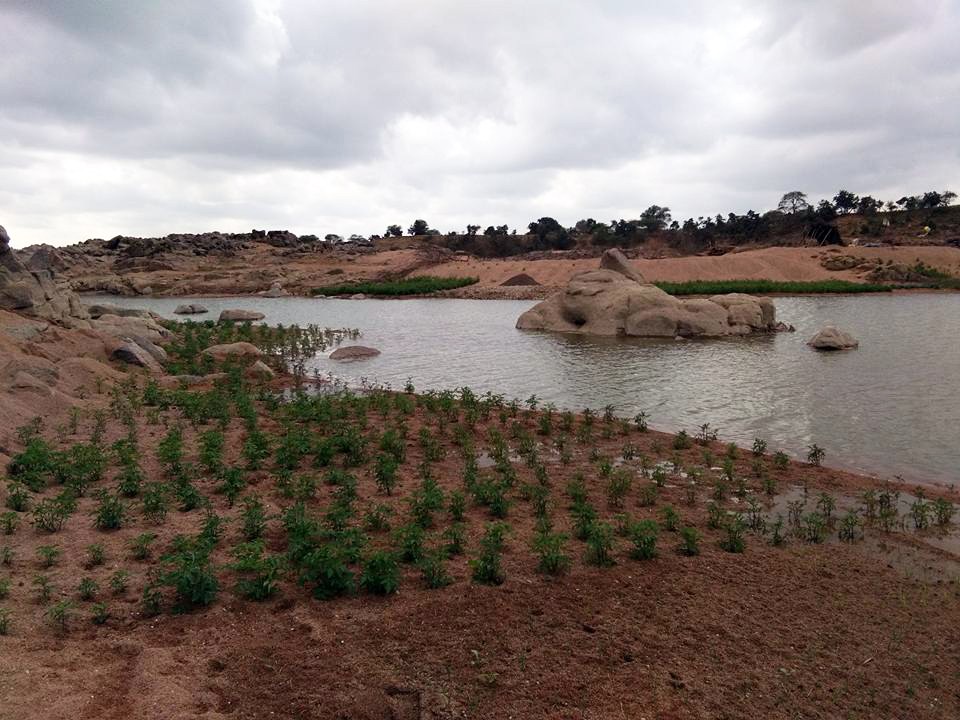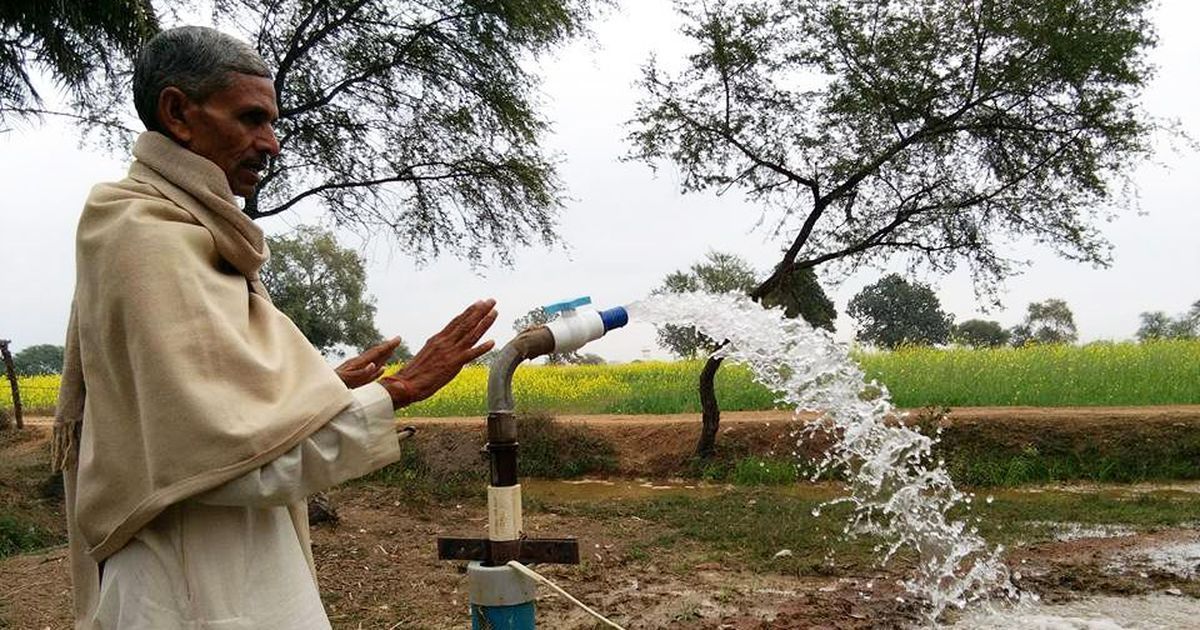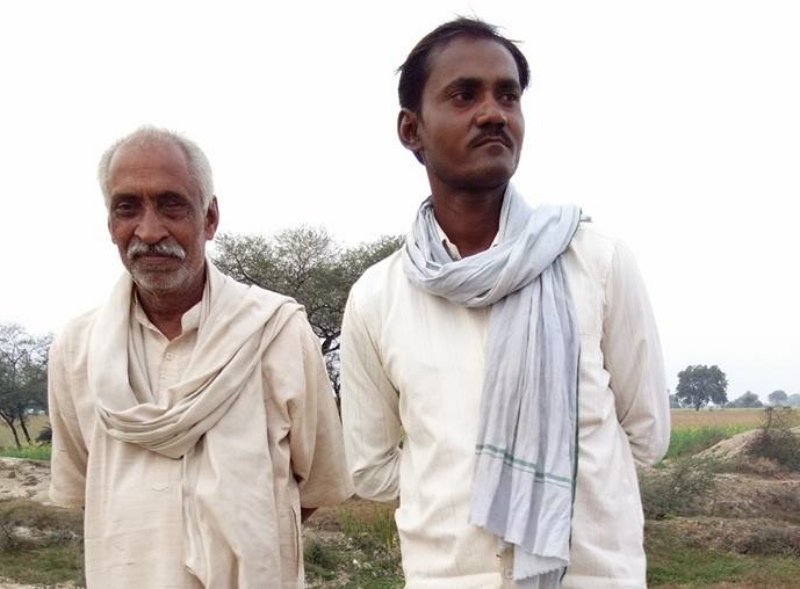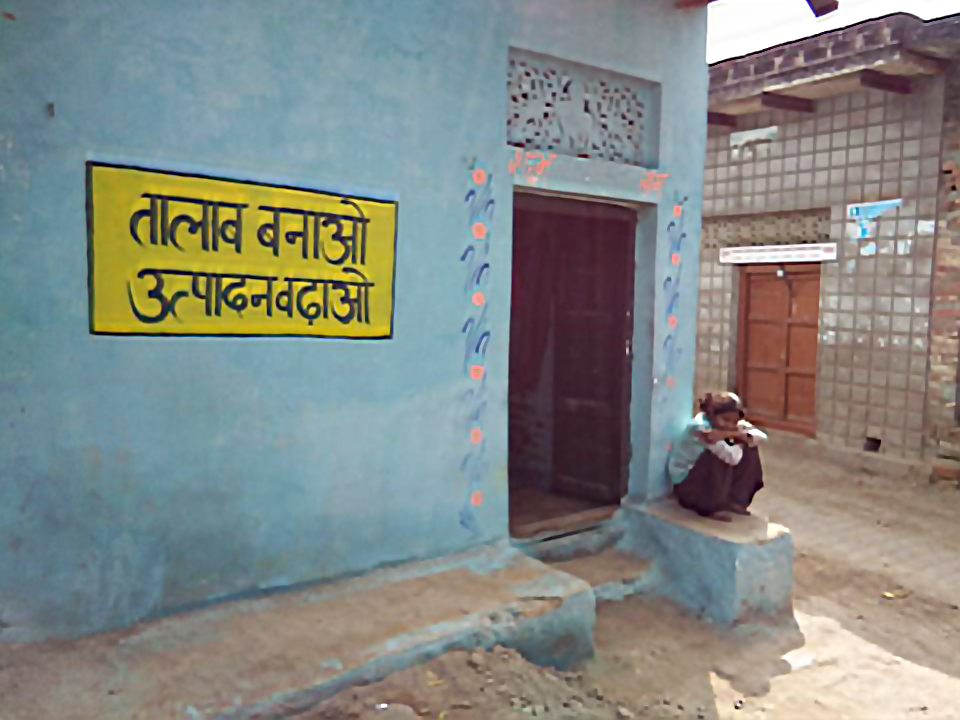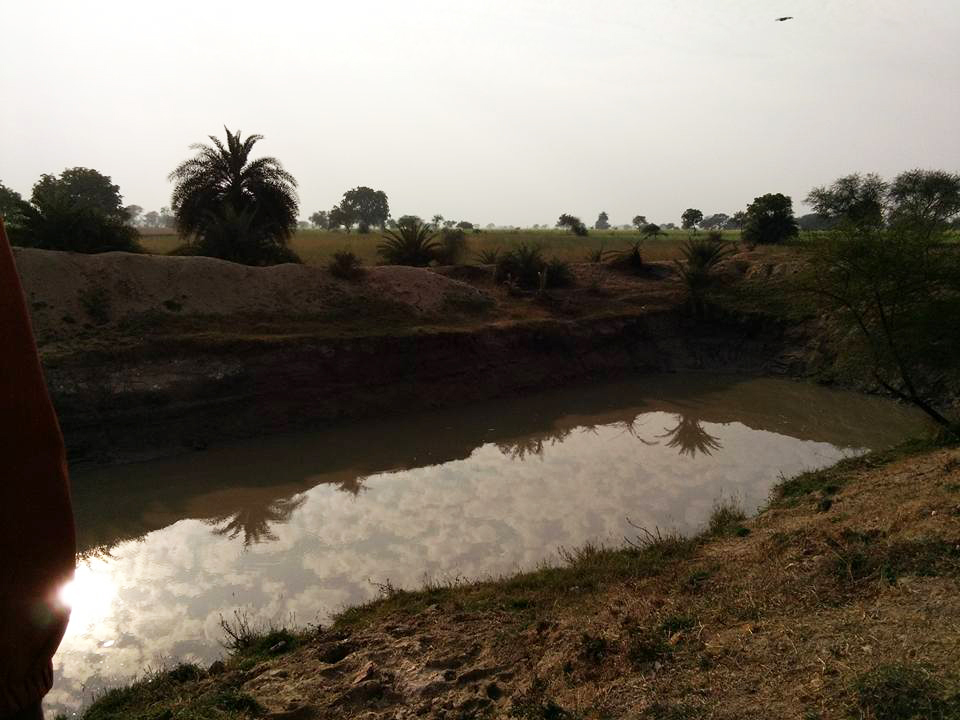Union Water Resources Minister Uma Bharti is using the project to burnish her credentials within the BJP, say party workers
Downstream from the forests of Panna district in Madhya Pradesh, the river Ken flowed into the plains of Uttar Pradesh’s Banda district with a certain calmness. In the month of January, the water levels in the river were low. They could drop further once water from the Ken is diverted to the Betwa river, about 250 km away, as part of an ambitious and controversial river-linking project being built by the Union government.
The Ken-Betwa link of this pan-India project will be built in Bundelkhand, the region straddling Uttar Pradesh and Madhya Pradesh. Both rivers rise from the Vindhya range in Madhya Pradesh and flow North towards Uttar Pradesh to eventually meet the Yamuna. The flat lands of Uttar Pradesh, where the rivers traverse through, are more populous, with agriculture being the main occupation. However, the region is traditionally drought-stricken – rainfall has been below average in 13 of the last 15 years. Data from the Agriculture Department of Mahoba district in Uttar Pradesh, which falls in Bundelkhand, shows that the frequency of droughts increased exponentially in the 1970s all the way up to 1992, when there were deficit monsoons leading to drought-like conditions every five years.
But 2004-2008 were the worst years in the memory of the farmers in Mahoba. Four consecutive years of severe drought brought them to dire circumstances. Even two years ago, deficit rainfall pushed the farmers off the edge. Twenty seven farmers committed suicide between June 2015 and March 2016 in Mahoba district alone, according to the division’s Agriculture Department.
The Ken-Betwa link is a part of the Interlinking of Rivers project being aggressively pushed by the Union government. It proposes to connect 14 Himalayan and 16 peninsular rivers by 30 canals and 3,000 reservoirs to irrigate 87 million hectares of land. The Ken-Betwa link proposes to irrigate 6.35 lakh hectares of land in six of the 13 districts that form the Bundelkhand region – Chhatarpur, Tikamgarh and Panna districts in Madhya Pradesh, and Mahoba, Jhansi and Banda districts in Uttar Pradesh.
But one of the assumptions underlying the project is flawed: canals are not the preferred system of irrigation in Bundelkhand.
From ponds to borewells
Both branches of the southwestern monsoon weaken by the time they reach Bundelkhand. Water conservation has been a concern in the region over the ages. Nearly 1,000 years ago, the Chandelas and other local kings of Bundelkhand built ponds and harvested rain water. Some of the ponds of medieval times can still be found. According to district officials, Panna alone has more than 55 ponds, and Mahoba has 100 small and large ponds.
Traditionally, irrigation in the region meant using water from the ponds in the fields. However, all this changed since the introduction of high-yielding varities of crops, which require more water, not to mention fertilisers and pesticides. Therefore, the reliance of farmers in these districts on ground water is much higher today.
Naval Kishore Dubey of Pandvi village in Banda district spent about Rs 2 lakh, his income for a year, on digging three borewells over the past five years. “Our life is all about getting water, thinking about how to get it and where to get it from,” he said. But why does he need to dig for ground water when his 10 acres of land lie half a kilometre from the main canal that brings the Ken’s water from Bariyarpur dam to Pandvi? Seasonality, he explained. The canals run dry during most months, except during the monsoon.
Dubey harvests two crops annually. He needs water throughout the year. When the canal ran dry four years ago, in order to save his winter crop, he dug the first borewell down to about 100 metres. The following year, when the canal ran dry, he dug the second borewell deeper than the first. To dig the last borewell, down to 500 meters, Dubey had to borrow money.
“What is the point of canals being full during monsoons?” he said. “We get rainfall anyway during that time.”
Only a small number of farmers closer to the dams or reservoirs benefit from canals, said Pushpender, a farm rights activist in Banda. They get the water that is released during the dry months. However, that water does not reach downstream because there is not a lot of water anyway, he explained.
“How can the farmers cultivate well when they are not in control of the water?” asked Pushpender. Farmers are at the mercy of the local authorities who decide when to let the water flow in the canals and when to stop it. “The only way farmers get a command over their water is by having ponds in their fields,” he added.
The revival of ponds
In early 2016, Dubey used a state government subsidy and cleared out half an acre of space in his field to dig a pond there and harvest rainwater. Not only does this pond hold rain water, it helps recharge groundwater massively. Dubey did not run out of water even during the rough summer months.
Pushpender said that there are thousands of such stories in the dry parts of Bundelkhand. In five villages in the western part of Banda alone, more than 300 farmers have begun harvesting rain water, according to Humane Agrarian Centre, a Banda-based non-profit.
Two years ago, Pratap Moolchand returned to Kakua village, 40 km East of Mahoba, after working at brick kilns in Punjab’s Hoshiarpur district for 14 years. The family built a pond by the edge of their 15-acre plot to facilitate rain water harvesting. “Since then we are assured at least one crop,” said Moolchand. “Two of us brothers, who had migrated for work, have returned to work in our fields.”
Prem Singh, a farmer-activist who runs the Humane Agrarian Centre, asked: “Why does the Ken-Betwa link want to impose more canals on us?” If anything, the region’s farmers need smaller check dams on the Ken, he said.
A check dam is a small dam that is built locally to reduce the velocity of water across rivers, canals or other sources of flowing water.
“We don’t need large dams like the ones being proposed in Daudhan,” he added. The Ken-Betwa link proposes to build a 77-metre high, 2-km long dam at Daudhan in Panna district of Madhya Pradesh, and divert water from the Ken to the Betwa.
Government officials, however, point to China as an example of successful river linking. China managed to link its rivers within a span of 10 years, while India is still debating a worthwhile plan, lamented RK Jain, chief engineer of the National Water Development Agency, which prepared the Detailed Project Report for the Ken-Betwa link.
“Why is the media making a fuss over ILR [the Interlinking of Rivers project]?” Jain asked. “Ken-Betwa is a pilot under this project, but we have technically linked rivers even earlier.” He cited the example of the Sardar Sarovar Project that transports water from the Narmada river in Madhya Pradesh to the Sabarmati river in Gujarat through canals.
But the work of building canals to take Narmada water to Kutch and Saurashtra, the arid regions of Gujarat, remains incomplete. In February, the government announced Rs 5,100 crores for building canals to Kutch. As an article published in Open magazine in 2009 pointed out, the massive delays in the construction of canals have thrown the cost-benefit analysis of the project off balance, and have resulted in canal water flowing into the sea unutilised.
“The Ken-Betwa link is a classic example of how Delhi-based planners go wrong when trying to devise massive infrastructure projects in regions they are not aware of,” said Himanshu Thakkar of the non-profit South Asia Network on Dams, Rivers and People.
Pushpender said that the government needs to understand the needs of specific areas before devising an irrigation plan. “Just because river linking has worked in other countries, it cannot be the magic solution to our problems,” he said.
Many people in Panna, Tikamgarh, Mahoba and Banda complain that the government ignored their views. They say the public hearings held by district authorities as part of the process of granting Environmental Clearance to the project were shams. Residents who stood up to ask questions were not given a chance, said Munna Maharaj, a farmer in Powai, Madhya Pradesh.
On October 24, Prime Minister Narendra Modi addressed a rally in Mahoba where he complimented Uma Bharti, Union Minister of Water Resources, for her interest in the project and said that it would fix the region’s water crisis. “We wanted to tell him that we don’t want it,” said Prem Singh, a farmer in Banda. “But we were never given a chance to meet him. It was a top-down speech, just like the project which is being imposed on us from above.”
Political push
BJP MPs from Panna, Tikamgarh, Banda and Hamirpur have largely been silent on the issue. They have neither endorsed nor rejected the Ken-Betwa link. “We got text messages from senior leaders in Bhopal to ensure that the public hearings went on smoothly, and those who question the project be kept out,” said a BJP leader in Madhya Pradesh who asked to remain anonymous. He said that he did not support the link, but has publicly followed the party’s line.
The party’s leaders in Bhopal said the project was being pushed by Bharti.
Water resources minister Bharti became the chief minister of Madhya Pradesh in 2003 but had to resign from her post nine months later. The Karnataka police had issued an arrest warrant against her, with charges of attempted murder and inciting a riot in Hubli in 1994.
Since then her relationship with her party has been troubled. She was famously suspended from the BJP in 2004, after a public fallout with senior leader LK Advani. She floated a Bharatiya Janshakti Party almost immediately, which saw no electoral success. It was only in 2011, after the hold of old-timers like Advani on the party was loosening, that she was re-inducted into the BJP. “Now she needs to carve out a space for herself in the party,” said the BJP worker in Panna district.
Party workers on the ground agreed that the minister had put her full political might behind the Ken-Betwa link. “She wants to prove to party leaders that they didn’t make a mistake taking her back into the party,” said a BJP worker.
Uma Bharti was unavailable for comment. However, in a press conference held in Delhi in December, she reiterated her commitment to bringing water to the dry areas of Bundelkhand through the Ken-Betwa link. “I genuinely believe this can put an end to water problems in the region,” she said.
Political leaders across party lines fear the project will create disharmony within Bundelkhand. “I see a Cauvery-style water battle ensuing between Madhya Pradesh and Uttar Pradesh if this project reaches completion,” said a senior BJP leader, who did not want to be identified since he was speaking against his party’s stand. “Today we marry between districts of Bundelkhand. We have extremely close familial relations. But that can fall apart.”
Madhya Pradesh has everything to lose, and Jhansi division of Uttar Pradesh has everything to gain, he added. Bharti has been elected from Jhansi. The region has other forms of employment like manufacturing, but Panna and Banda were predominantly reliant on agriculture. “The Ken-Betwa link is like stealing food from a malnourished child and feeding an overfed one,” he said.
This is the concluding part of a two-part series on the possible impact of the Ken-Betwa river linking project. The first part can be read here.
Published in: Scroll.in
Published on: 27 March, 2017
Link: https://scroll.in/article/831471/farmers-dont-want-the-ken-betwa-river-linking-project-so-why-is-the-government-pushing-it


